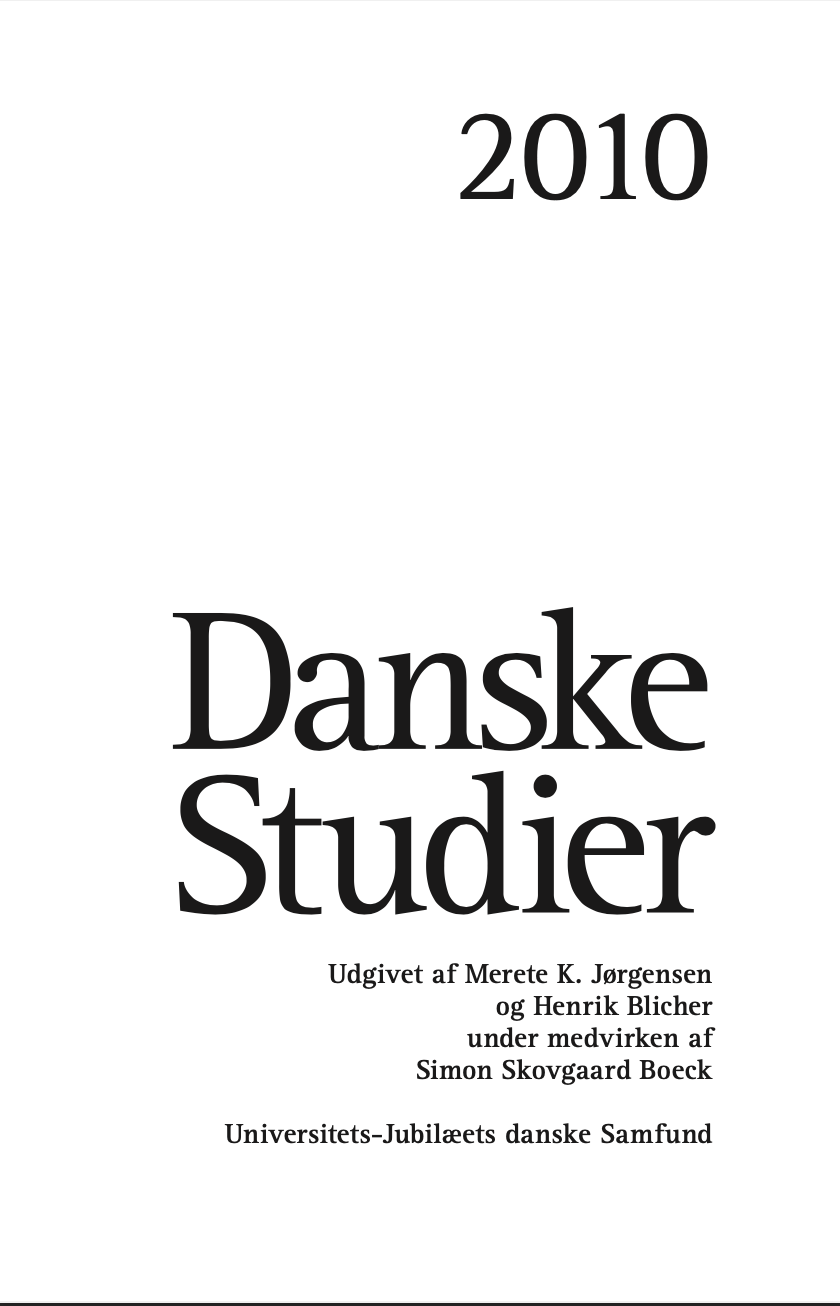En mulig fonetisk forklaring på stødets opståen
Nøgleord:
Stød, FonetikResumé
In this paper, I will present a new hypothesis regarding the origin of the Danish stød which connects it to consonant devoicing in certain phonetic contexts. The main assumption is that in the Old Norse language spoken in the Viking Age in some areas of Den- / »skin«) and in internal position before voiceless consonants (e.g. ON /lengsti/ »longest«) underwent devoicing. It is likely that at the same time this process produced the stød phenomenon in some Old Norse dialects (in the Danish area). Empirical data seem to confirm the relationship between stød and voicedness-lowering. I assume that at that time, as occurs in modern Danish, the occurrence of stød was limited by certain phonological restraints. It only occurred at the end of stressed bimoric units, made up of one long vowel or one short vowel followed by a voiced sonorant (e.g., /’/, /len’gsti/). Thus, the stød was soon given a demarcating function as a borderline between a full voiced bimoric syllable nucleus (//-, /len/-) and a left-over devoiced syllable tail (-//, -/g/-). But unlike in modern Danish, the stød at that time was entirely bound to the phonetic environment and therefore it was not yet distinctive. Moreover, I assume as most likely that the stød phenomenon originally also had certain prosodic features which mainly consisted in a sudden fall of tone height, as seems - standing to the so-called peak-delay model, which assigns the Scandinavian accent 1 an original high-low tone contour. Then both stød and accent 1 were characterized by a similar tone pattern, which gives the assumption of an original relationship between stød and accent 1 a concrete basis. By the end of the Viking Age, when both anaptyxis in Auslaut and enclitic articles arose, the whole language system was remodelled and the stød became independent from devoicing. Thereby, it became a phonologically distinctive feature and was suitable for morphological use. As time passed, its original distribution in the lexicon changed through the effect of analogy and the rules governing its occurrence became more and more dependent on morphological and lexical mechanisms.
Downloads
Publiceret
Citation/Eksport
Nummer
Sektion
Licens

Dette værk er under følgende licens Creative Commons Navngivelse – Ikke-kommerciel – Del på samme vilkår (ShareAlike) (by-nc-sa).
Artikler offentliggjort fra 1/1 2021 er omfattet af CC BY-NC-ND-Licens.
Artikler publiceret i Danske Studier før 1/1 2021 er underlagt dansk ophavsret. Det betyder at man må citere, downloade og linke til dem via tidsskrift.dk. Genudgivelse af artiklerne kræver en aftale med redaktionen som også ejer ophavsretten.





